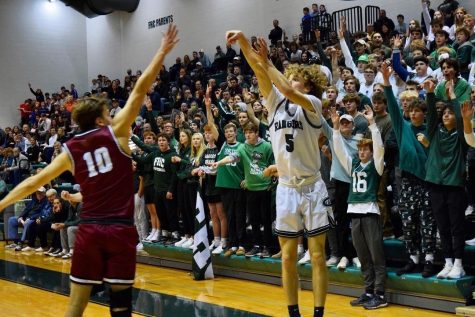In today’s sports, even the best athletes struggle to get scholarships
For many athletes that are serious about their sports, a common goal is to play in college. Those with really big dreams strive to earn an athletic scholarship and go to school for free while playing their sports. This has always been difficult, as only about one to two percent of all high school athletes receive any type of scholarship, with some receiving very little money at all. With this being said, in today’s world of sports, it is even more difficult for athletes to earn scholarships.
The transfer portal is one of the biggest challenges that high school athletes face. College coaches turn to the portal first in looking for recruits. They want to give scholarships to athletes that already have the experience of what it is like to play a college sport. Every year, thousands of athletes decide to enter the transfer portal with hopes of earning scholarships and being accepted into other schools. Unfortunately for high school athletes, athletes in the portal have a much higher chance of being recruited than high school athletes.
After looking at transfer portal athletes, it is very common for colleges and coaches to focus their recruiting on junior colleges. To them, this might be the second-best option, as most junior colleges have athletes with higher levels of talent and experience than high schoolers. In fact, many junior college athletes are athletes that could have been Division 1 players right out of high school but did not have the grades or had other problems outside of their sports. Junior colleges’ main job is to get the athletes prepared for the next level and to earn them scholarships in order to continue playing, a feat that is accomplished more times than not, taking away even more scholarships for high school athletes.
In addition, with rules that allow players to redshirt for medical reasons or other factors, college players are able to get an extra year of eligibility. On top of this, the NCAA decided that seasons during COVID-19 would not count towards eligibility. With these rules, players could be on scholarship for six years, instead of the traditional four years or less, taking away even more opportunities for high school athletes to earn scholarships.
In order for athletes to earn scholarships to play in college, they not only have to compete with all of these alternate options, but they also have to compete with other high school athletes, making it incredibly difficult to continue their athletic and academic careers for free in college. With this being said, if an athlete really wants it, it is achievable, as long as that athlete stays on top of his or her grades, attitude, extracurricular activities, and training for the sport. The odds are certainly stacked against many, but winners do exist, and they do prosper.

Jonas is in 11th grade and loves sports. His favorite sport to play is basketball, and he is currently a captain on the varsity team here at FHC. His favorite...



